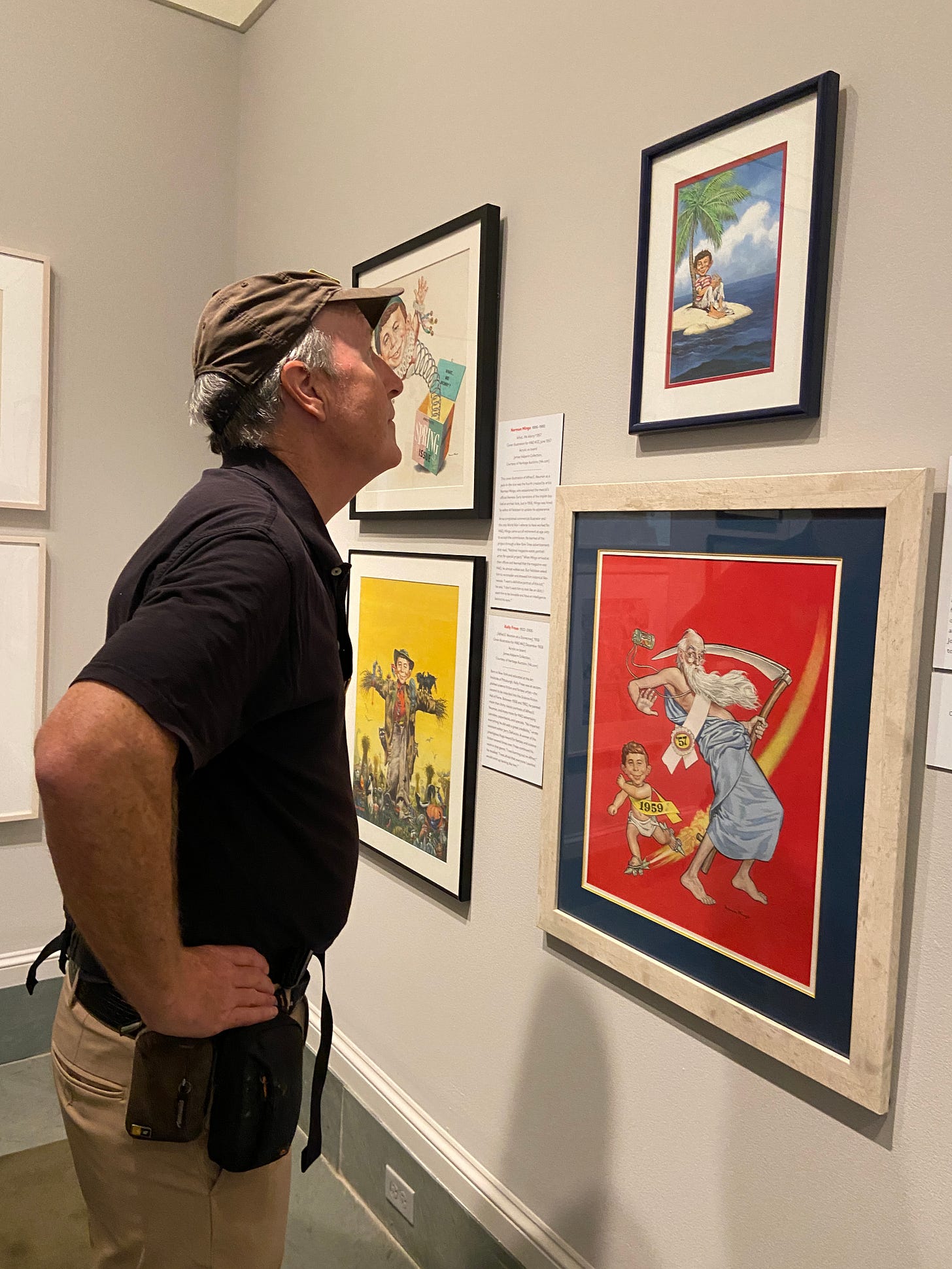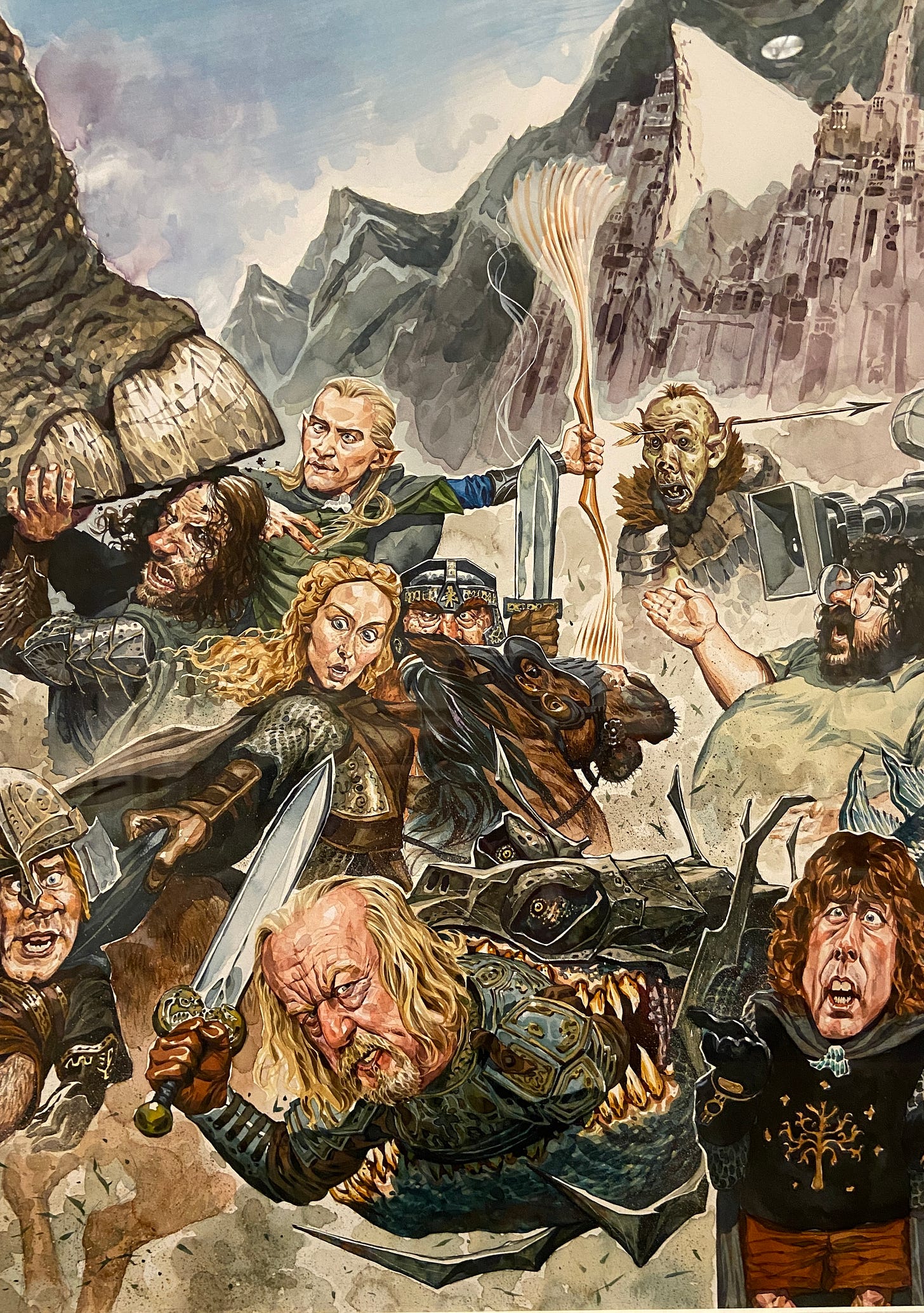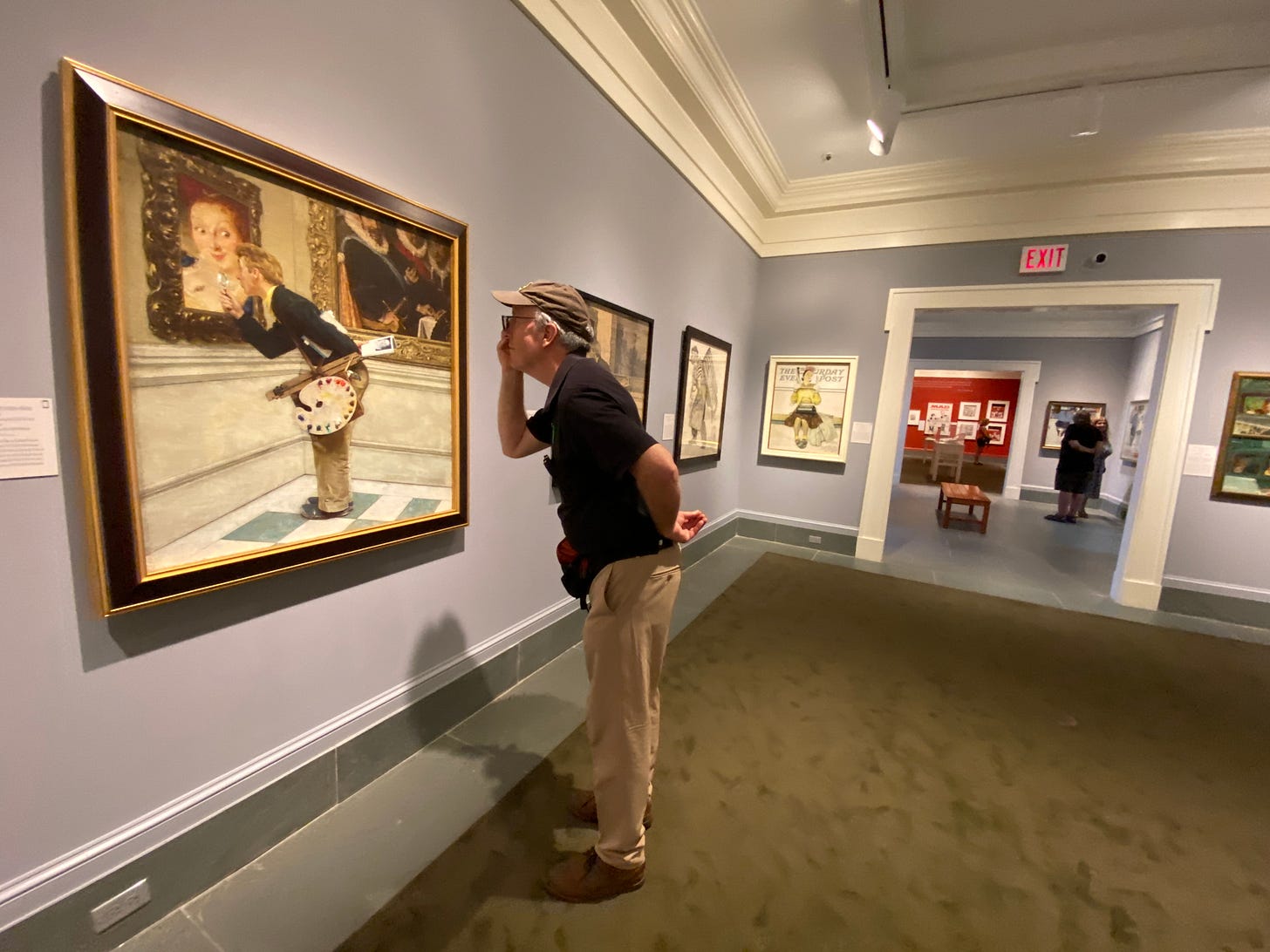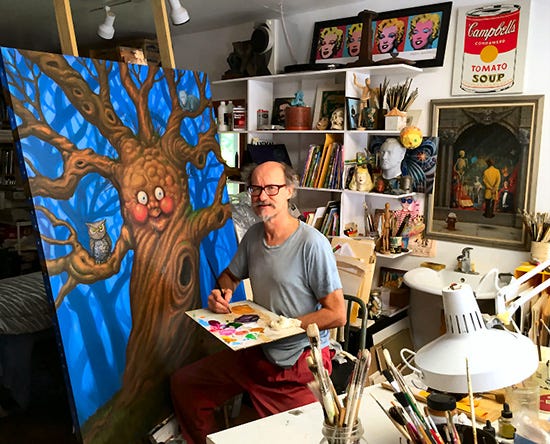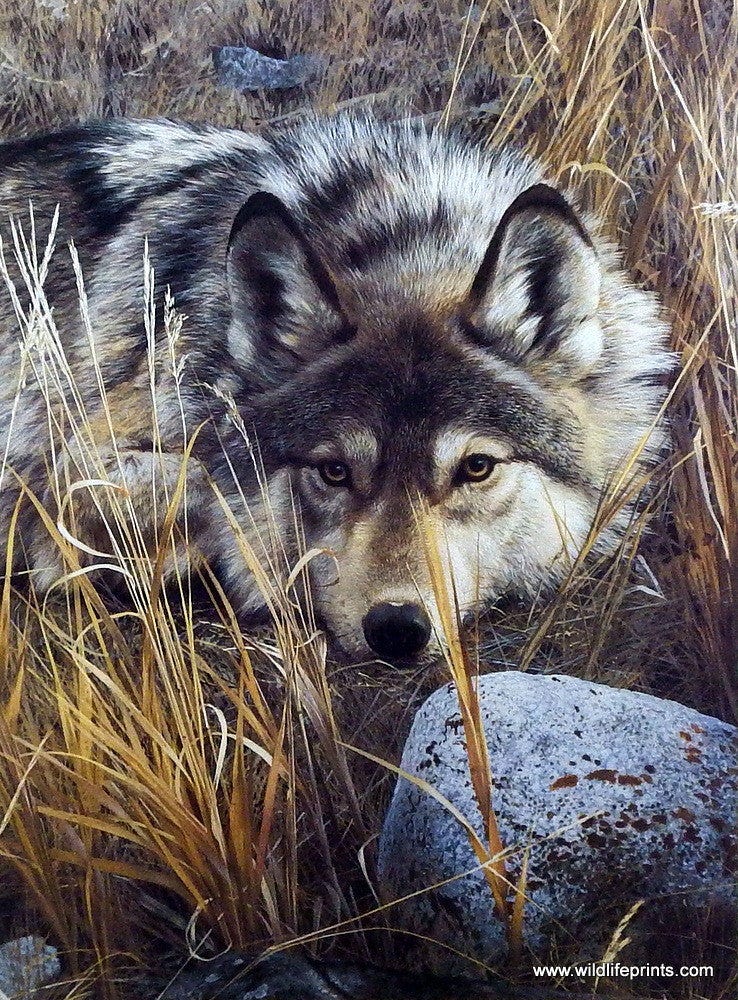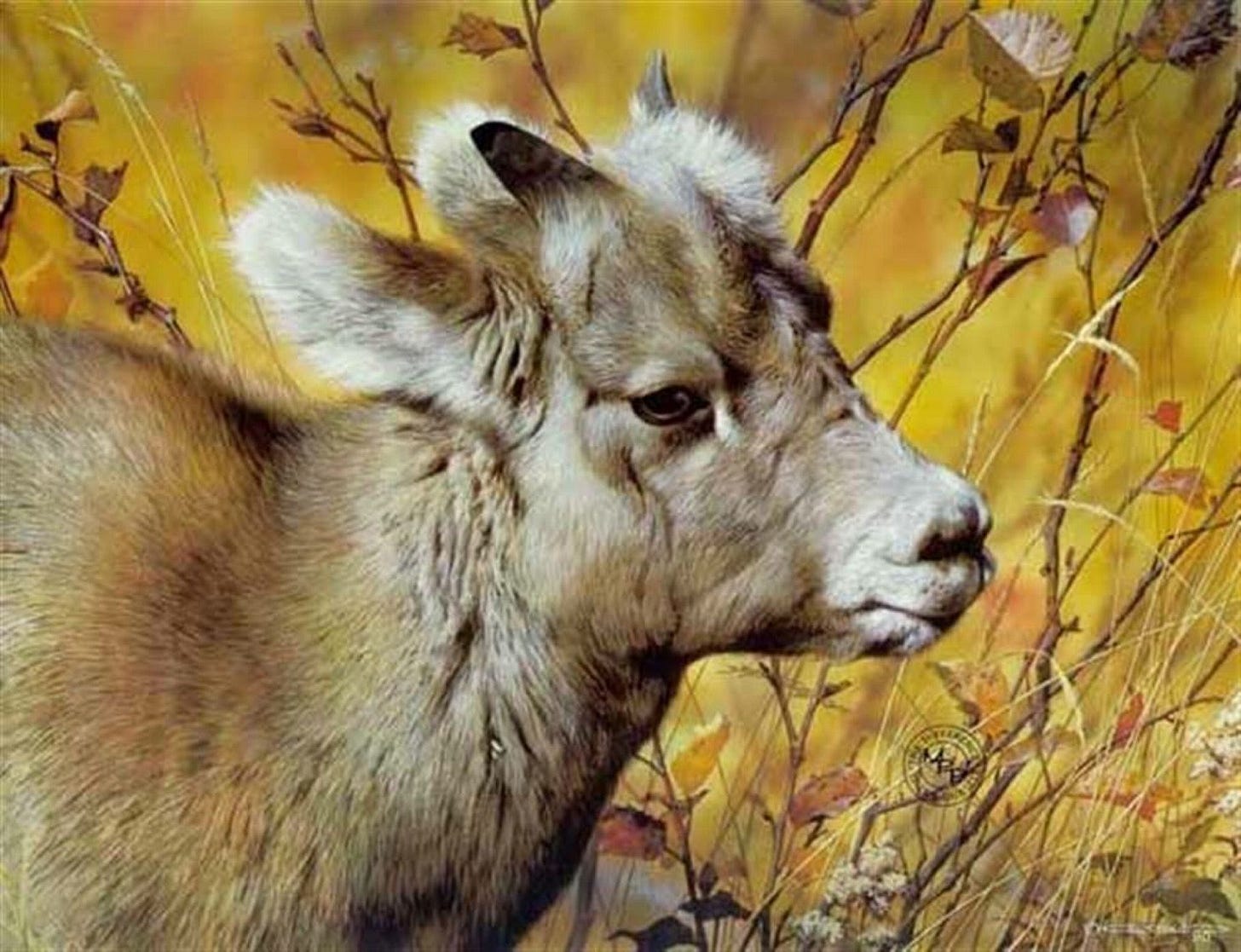Sunday, July 21, 2024
Detail of a Dinotopian Parade
Monday, July 15, 2024
Why Are Art Schools Closing?
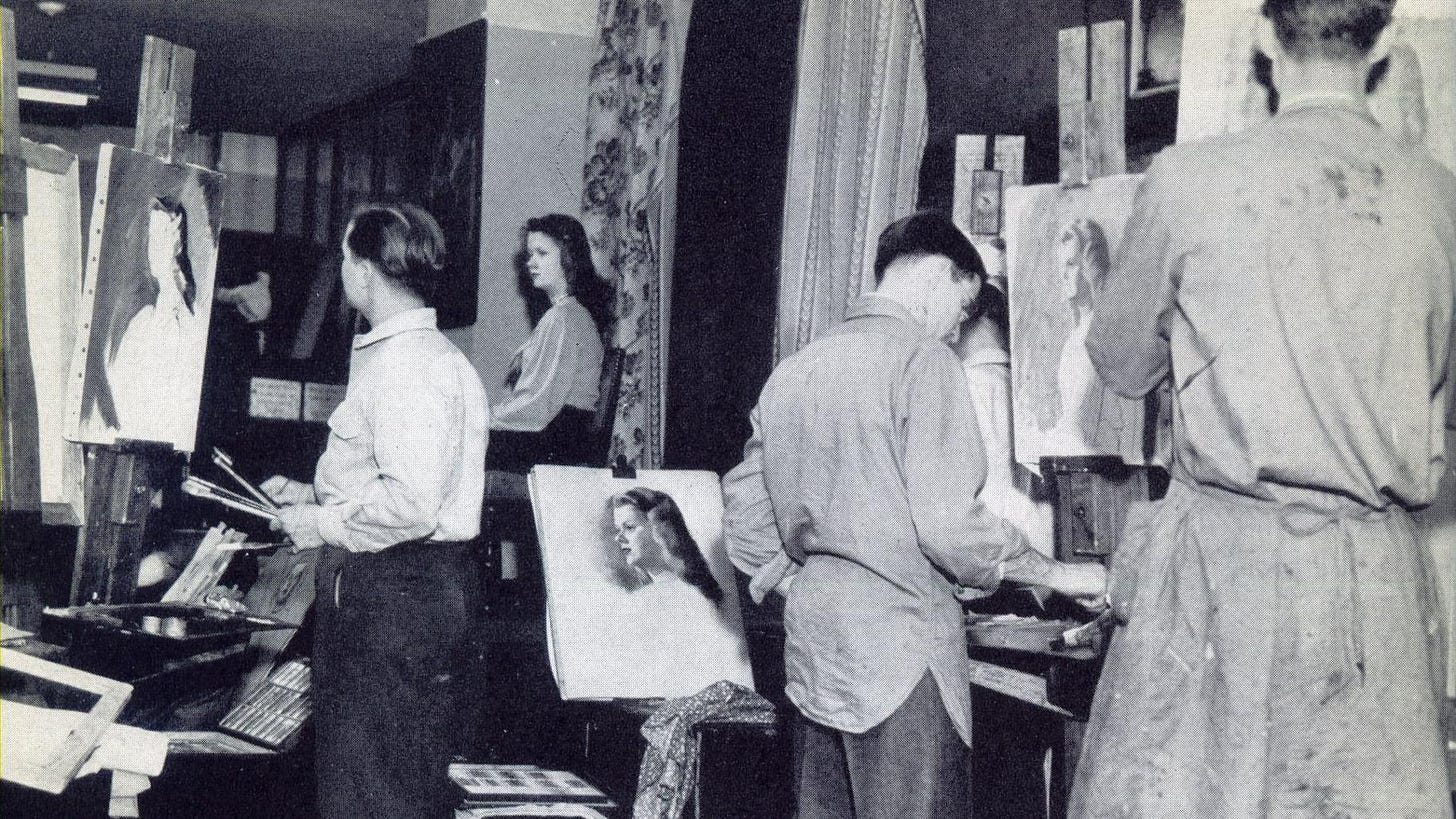
It was founded in 1923 with a curriculum that emphasized painting and drawing and painting from live models.
Graduates include some legendary illustrators and easel painters: Thomas Blackshear, Alex Ross, Richard Schmid, Howard Terpning, Gil Elvgren, and Haddon Sundblom.The closure of American Academy in Chicago follows the closing of UArts in Philadelphia and the Art Institutes all across the country. Why are some art schools closing? Read more on Substack.
Friday, July 12, 2024
Three Book Recommendations
Monday, July 8, 2024
Buick Special
Buick Special, pencil and markers. Note the rust stains coming up through the roof section, the cracked window, and the junkyard fender.
Friday, June 28, 2024
Mad Magazine Art at the Rockwell Museum
The Norman Rockwell Museum in Stockbridge, Massachusetts, is currently hosting an ambitious summer exhibition called "What, Me Worry? The Art and Humor of MAD Magazine". This is the first comprehensive museum show dedicated to MAD Magazine's art and satire.
The exhibition explores MAD's evolution from its beginnings as a popular humor comic book in 1952 to its emergence as an influential magazine that tweaked those in power, engaging generations of loyal readers, me included. The show is popular, and the audience includes both young and old people who grew up loving the magazine’s mildly subversive attitude.
Curator Stephanie Plunkett selected a wide range of original pen-and-ink drawings and paintings created by MAD's "Usual Gang of Idiots" — including the regulars such as Jack Davis, Sergio Aragones, and Norman Mingo. There’s even a whole room devoted to works by the self-taught caricature artist Mort Drucker.
Hermann Meija -Bored of the Rings—The Fellowship of the Ka-Ching!, 2002, Ink and watercolor on paper.
The exhibition provides a nostalgic journey for Baby Boomers who grew up with MAD, while also introducing younger readers to its satirical ingenuity.
Along with the MAD show, there’s also an accompanying exhibition of Norman Rockwell’s humorous illustration. Rockwell himself never illustrated for MAD, but he came close to doing so, and there’s an exchange of letters where he almost accepts an assignment to paint the definitive Alfred E. Neuman, but ultimately he turned it down.
Speaking of James Warhola, there’s a screening tonight, June 28th, of the documentary “My Nephew Jamie.”
Admission price to the museum is $25 for adults. The exhibit runs through October 27. Allow lots of time, because there are more than five big rooms jammed with art, and many of the pieces have a lot of elements to digest and a lot of text to read.
Complete list of artists on my Substack.
Friday, June 21, 2024
Painting Daisies by NOT Painting Daisies
In this new video on YouTube, I explore the practice of negative painting.
Friday, June 14, 2024
Is Competition Good for Artists?
Friday, June 7, 2024
Be Consistent With Titles
I called one painting "Rainbow Bridge" in one exhibit and "Gideon's Bridge" in a book.
Unfortunately, both names will follow that image forever.
'Untitled' is a Title: Eleven tips for titling paintings.
Thursday, May 30, 2024
Archery Target
Someone must have set up this target for archery practice. It's in a lonely place way down below a high bridge.
Monday, May 27, 2024
Rendering Realistic Fur in Gouache
Carl Brenders (b. 1937) is a wildlife artist from Belgium known for his richly detailed gouache and watercolor paintings of mammals and birds in their environments.
How does he do it? There’s not much information about his technique available online, but I did some digging.
He begins by taking a lot of photographs of the animal and its habitat.
According to his 1994 book Wildlife: The Nature Paintings of Carl Benders:
“Even after spending weeks of research and photography in the field, the artist devotes more time to develop the concept of the painting.
“With this planned, he first makes a complete pencil drawing of the entire subject, including the background.
“Over his pencil work he then paints with sepia watercolor much like pen-and-ink drawing. On top of the sepia he airbrushes areas in watercolor, and then paints over all this with gouache.
“He finds the combination of gouache and watercolor perfectly suited to his detailed work; it achieves an effect he finds impossible with acrylic or oil paint.
“Only the Flemish masters, says Brenders, could achieve such detail in oils.”
Quotes by Dana Cooper from the book Wildlife: The Nature Paintings of Carl Benders









